Designing for sustainability
Nature is a part of us – we admire it, seek it, and need it for our everyday well-being. Being rooted in Nature from the very beginning of the company’s existence, we feel obliged to take care of the natural environment through sustainable development. Our contribution to the efficient resource management begins at the design stage. We use raw materials with the respect for natural resources, and work with the designers, who appreciate Nature as much as we do. They strive to minimize the use of raw materials, make the products recyclable and ensure their long life cycle.
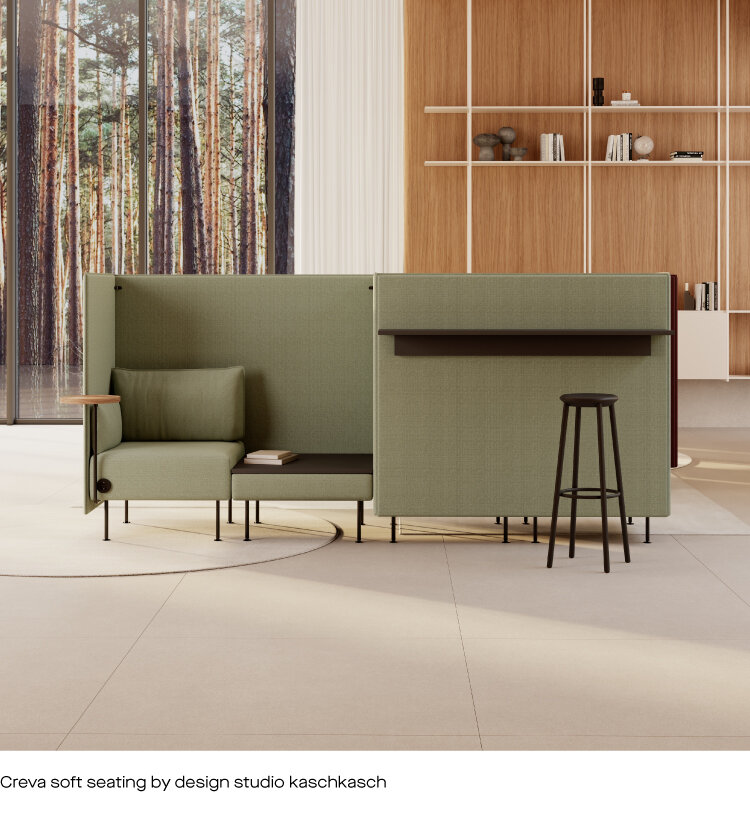
The longevity of the product is influenced by various factors, among others: timeless design, that lets the product look fresh and modern; durability, due to which the product provides comfort; and ability to replace most parts. The designers, who create for Kusch+Co aim to achieve all the above in every piece of furniture they introduce to the market.
Creva soft seating by design studio kaschkasch
“To make Creva soft seating as flexible as it is now, we had to reduce the design to it’s essential elements” – these words of Sebastian Schneider, one of the Creva designers from design studio kaschkasch, refer also to the timeless design, which characteristics among others are: simple, pure and minimalistic. Not only the design of Creva ensures its longevity, but also the ability to replace most parts – due to the latter, estimated life cycle of the Creva soft seating is 12 years.
Genaya by brodbeck-koepp design
Another product designed for longevity is Genaya.
“With Genaya we focused very much on reduction, simplicity and a long lasting design. Reduction in the number of parts and volume, visually reduced by combining the modules to visual units. Simplicity in the application: easy to combine, configure, disassemble, and return to the value chain in whole or in parts.” – says Veronika Koepp and Stefan Brodbeck, the faces behind brodbeck-koepp design, and the Genaya designers.

Njord by Antonio Scaffidi and Mads K. Johansen
The minimalist design of Njord reduces the use of materials without compromising on the user’s comfort, leading up to a more sustainable resource management. In Njord, solid wood meets felt – these two materials can be separated up to 90% to be later recycled and reused.
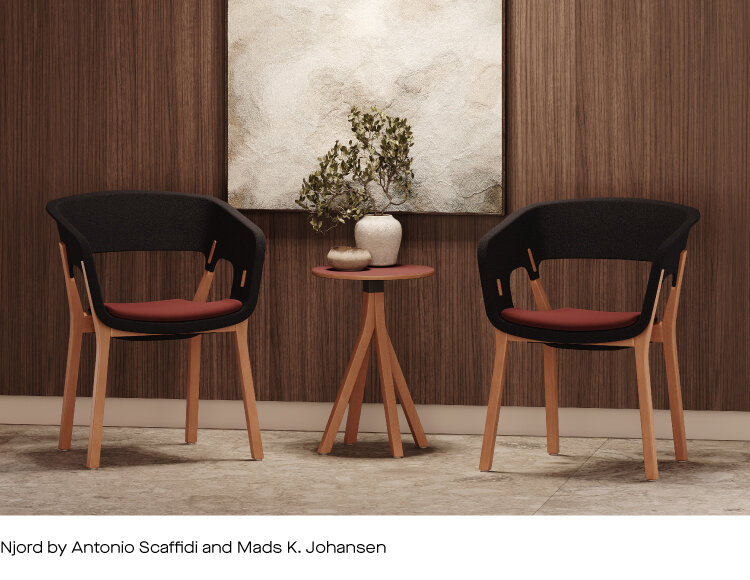
Embla by Antonio Scaffidi
Being aware of how the connection with nature influences human well-being, at Kusch+Co we focus on bringing out the natural beauty of raw materials, like wood, in our products, taking into account, that raw materials are challenging and rewarding at the same time. “Wood requires and expresses craftsmanship like no other material” – says Embla designer, Antonio Scaffidi.
Embla beautifully highlights the natural material and gives the user the satisfaction of communing with nature.
“The shape of Embla is very pragmatic and understandable, and intentionally framed around the human being sitting in that chair” – with these words Antonio Scaffidi describes Embla.
Watch the interview with Embla designer and learn more about his work.
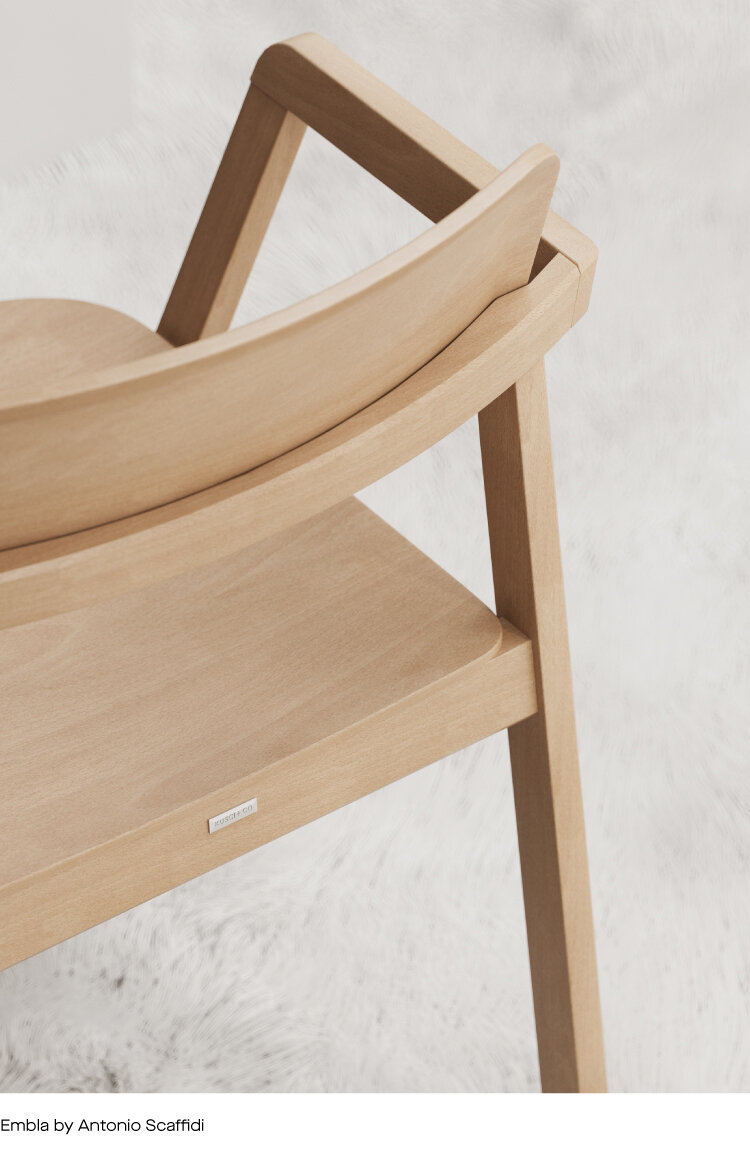
Nature surrounds us, feeds us and gives us a sense of calmness. Living in harmony with nature has always been one of the crucial factors of a human well-being.
Being aware, that with our actions today, we take responsibility for the future of the next generations, at Kusch+Co we live and breathe sustainability across all divisions, in accordance with environmental guidelines. This idea is constantly guiding us through the entire product life cycle: from the design stage, the development and production processes, packaging and delivery, up to the recycling and returning of used materials and components to the new cycles, that will serve to the next generations.
The interview with Sebastian Schneider and Florian Kallus (design studio kaschkasch), the designers of the Creva Family.
“We design for the human and the human is in the centre of our interest” Sebastian Schneider, design studio kaschkasch.
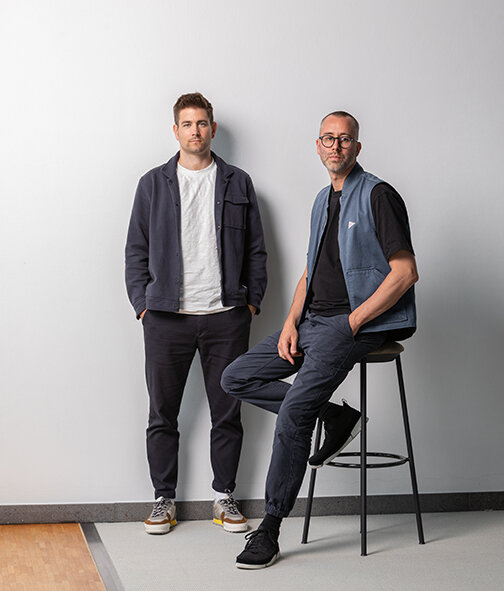
Design studio kaschkasch was founded in 2011 by Florian Kallus and Sebastian Schneider. The designers share a background that combines hands-on and academic education: both are trained as cabinet makers followed by studies in product design at academy of design and craft Münster. This versatility informs everything kaschkasch does. The studio appreciates practice and technical understanding, which contributes to their design method: traditional craftsmanship techniques and a mindset geared towards innovation, disruption and new technological solutions.
Their design approach, in synergy with Kusch+Co perspective, resulted in the Creva family collection – an ecosystem of places to work. Prioritizing the needs of the individuals, the Creva family offers multiple possibilities for people to come together, to connect, to brainstorm, to meet one-on-one, while at the same time encompasses spaces perfect for deep concentration and ideation tasks.
In the interview, Florian Kallus and Sebastian Schneider share the story about the cooperation with Kusch+Co, and explore their inspirations and insights, that accompanied them while designing Creva family.
The cooperation with Kusch+Co.
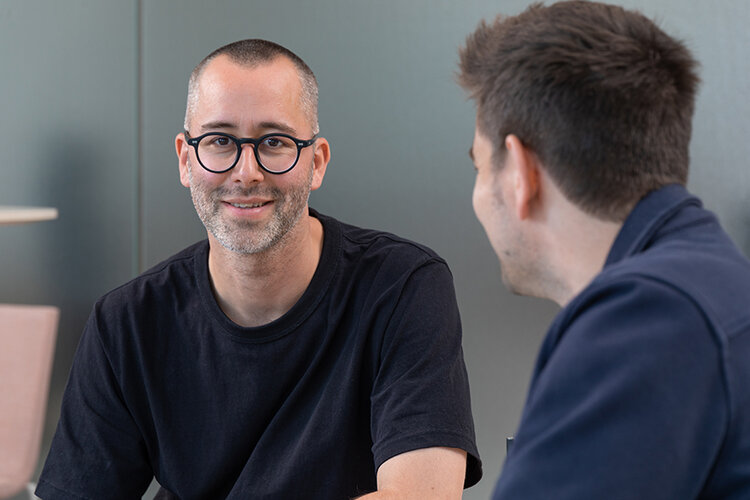
Florian: Our journey with Kusch+Co started when we were still at university.
Sebastian: I think we share a lot of values with Kusch+Co. The first time, when we were here, we saw a lot of craftsmanship in this company and a lot of quality. I think this fits very well with our background, because we both are trained as carpenters, and we also work crafty and handy. We appreciate a lot the quality, that Kusch+Co products are about.
Florian: During the whole process, the collaboration with Kusch+Co it was always a joy to be with them in the workshop and work on the prototypes and the projects, and also to know their expertise.
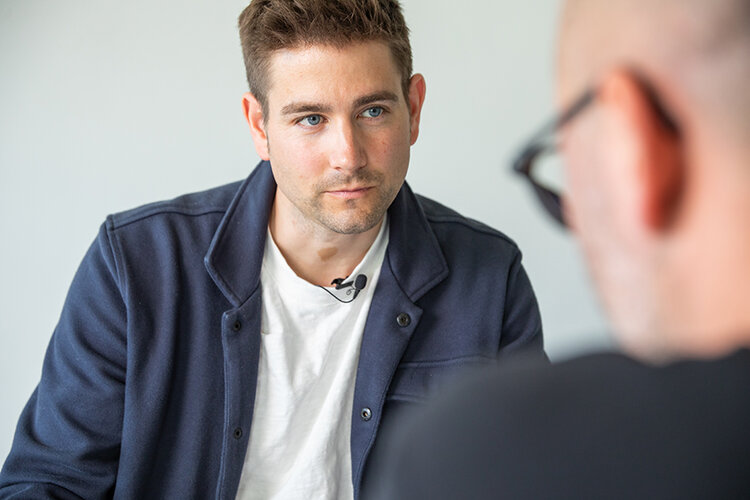
Sebastian: We don’t want to do just beautiful products, we discuss the functionality and usability a lot in our studio, that’s a different layer coming to the products – not just aesthetics, it’s also the functionality. We design for the human and the human is in the centre of our interest – we think a lot about the usability and functionality of our products and want to fulfil the needs of the humans out there.
The Creva Family.
Florian: Designing a whole family is a different job. You always have to look 360- degrees and find a way to implement the concept in every single piece of the family, which is a tough job.
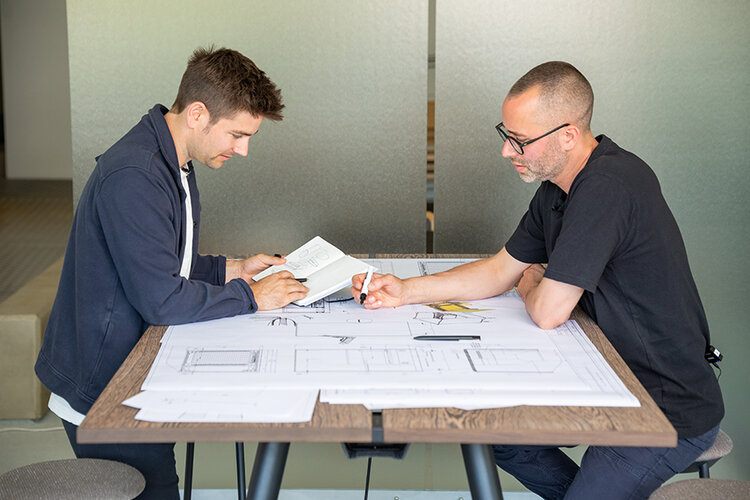
Sebastian: In the end, it must come together, and it’s so important, if you design the family, that the design is not too loud in my opinion, that it can work and be a family together. If you design just a single piece, it is ok if it has a really strong character and unique appearance, but if you design a family, everything must merge together.
Florian: One of the main features of the Creva family is that we implemented some homely elements into contract furniture, we added wood, which has a warm, homey feeling.
Creva Table.
Florian: We had the idea of adding this gap, which is called crevasse, the inspiration was also crevasse…
Sebastian: … which are the linear cracks in glaciers.
Florian: We are now able to attach all these functional and decorative elements, such as trails or electrification, or acoustic panels that are rotatable and moveable. I think one big USP is also the flexibility, that you can add and remove things when needed.
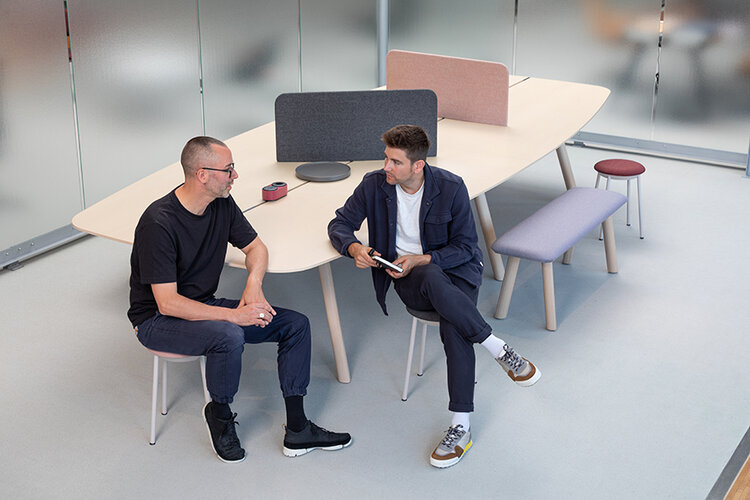
Sebastian: Creva table is a perfect touchdown table, you can come together to collaborate with the colleagues, but you can also separate very well due to the screens on the table. You can move them really fast and easy, and push them just to the side and separate your own zones.
Florian: The Creva stool was born during the process, when we were working on the table system. There was a moment, when the idea was born to add a stool and also a bench. Especially the stool was the idea to have something which is super mobile, that you can easily grab and move around, and use wherever it’s needed.
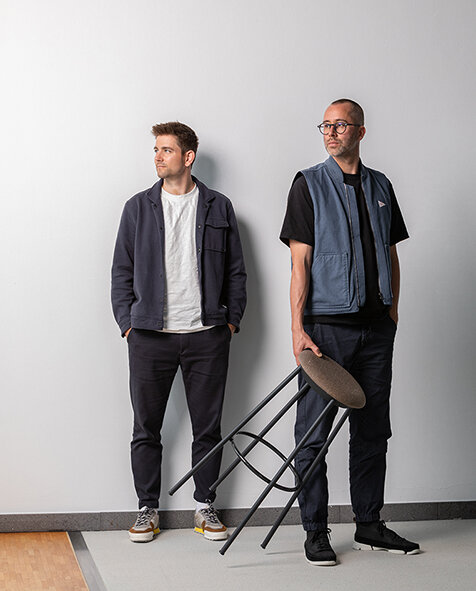
Sebastian: If you are building a whole family, sometimes it’s important not to get too boring and to break the design concept, so I thought: let’s take this stool project, it’s just a small item in the whole family, and let’s break the concept. Let’s not take the same profile for the leg, let’s do it in another way to make it even more exciting and eye-catching.
Creva also won a design price, the iconic award for excellent quality design, we are super happy to receive this.
Florian: It’s a great honour.
Creva Soft Seating.
Sebastian: Right from the start, our goal was to create an unbelievably extendable, and flexible soft-seating system. We wanted to create a system, that is nice looking – from a single armchair to a huge landscape. To make Creva soft seating as flexible as it is now, we had to reduce the design to its essential elements, because we wanted to extend it in all directions. That was complicated to solve and we came up with the idea to make a shell around the seating, which is super pure and as thin as possible, and super clean, and then we wanted to play with contrasts and added a bold, comfortable seat and back cushions to have this contrast. For me, it is what makes Creva soft seating really unique.
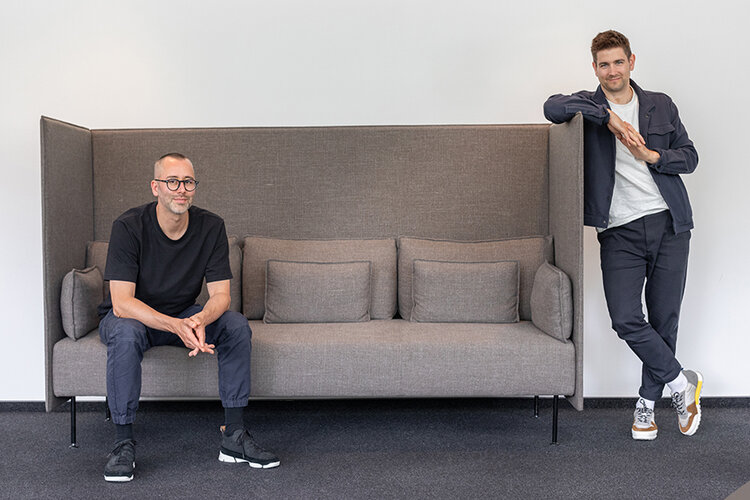
Florian: The main idea for the Creva soft seating is that we have this very simple-to-understand platform, based on all this, you can also integrate electrification, or coffee table, and also we have the low back and the high back to have possibilities within the public spaces to take time for yourself, and make a phone call or a private chat with your colleagues.
Sebastian: It’s nearly the same what Creva table is offering: you can come together and have a discussion or talk with colleagues, but you can also really separate from each other and have your time for yourself.
Creva soft seating is perfect for public spaces in general: super nice to use in airports, but also in offices. It’s perfect that you can really be for your own and separate you from the surrounding sounds.
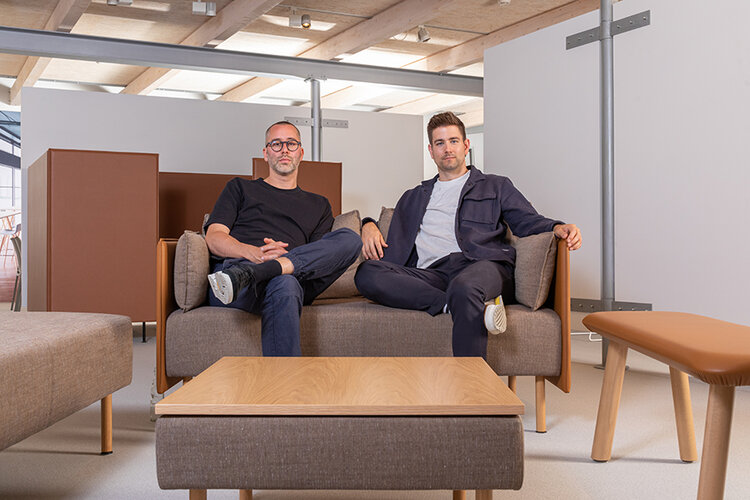
Florian: For example, if you take something like we are sitting on right now, you can use it in the lobby, but when you have like the high back version, you can use it in open office spaces or also in the airports or wherever you can imagine.
Creva Wall
Florian: After introducing Creva soft seating, it felt naturally to introduce also Creva wall. The overall shape or design of the Creva walls are coming from the small tables which are already existing in the family as table panels. So we took the shape, increased the dimensions and kind of put it on the floor to separate rooms, or to kind of new arrange the architecture or interior.
And we also found a very nice way of attaching them, working due to magnets. So you just place them next to each other, and they will find the right position and snap or click, which works very intuitive and is also within the idea of or the spirit of the Creva family, that you can super easily move around and rearrange whenever you want.
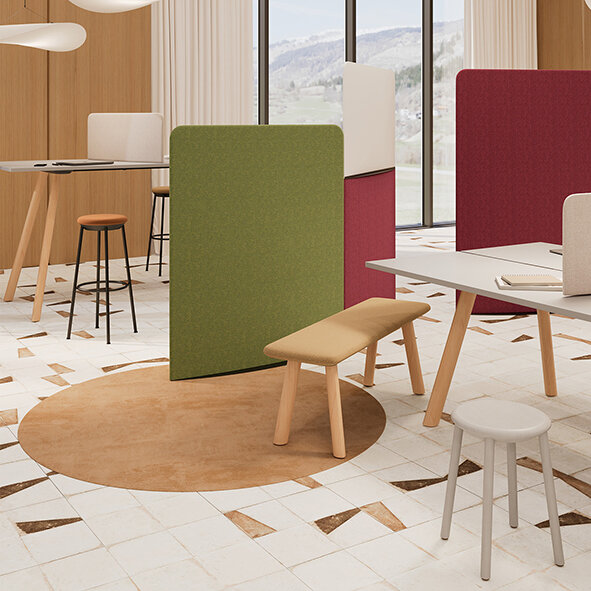
Sebastian: We have the Creva walls in two different heights and two different widths, and we have different versions: you have the metal base, which is a bit like the shape of the panel itself, but not totally, so like the shadow of the panel. And then we have four feet base with castors, so the panels are also really agile and flexible. It’s super nice, you can create a space in space.
Florian: It is also very important, that these panels also have acoustic relevance, so it will reduce noise and also change the acoustics in the room.
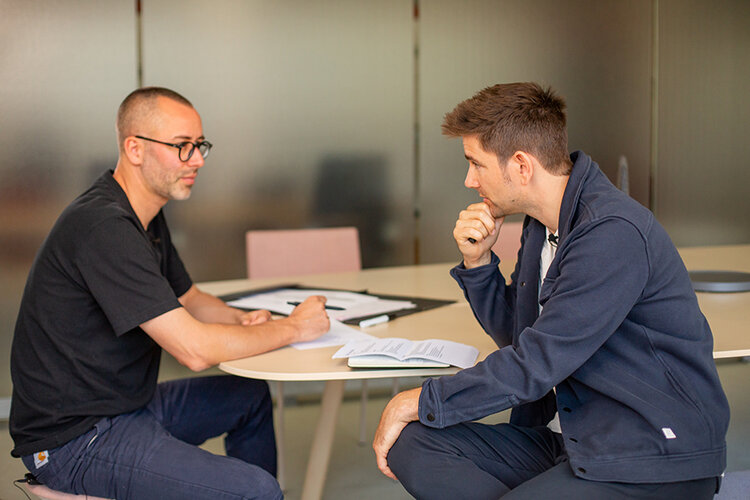
Airports of the future – new trends follow new needs.
Be it business trip or holiday – passengers expect to feel the travel vibe even before they board their flights. The travel vibe not only means waiting on comfortable benches together with travellers from all over the world, enjoying a view of activity on the apron. It means the experience of stepping out of their daily routine, being exposed to something new, unknown, interesting or even intriguing.
Nowadays passengers expect to receive all this in a high-quality package, including the convenience of choosing the kind of area that meets their momentary needs, like relaxation, dining, socialising or working, including being able to charge their mobile devices.
In general, they want to feel the travel vibe in a way that allows them to stay in their comfort zone, or even enhance it.
The experience: an intriguing, premium-quality unknown.
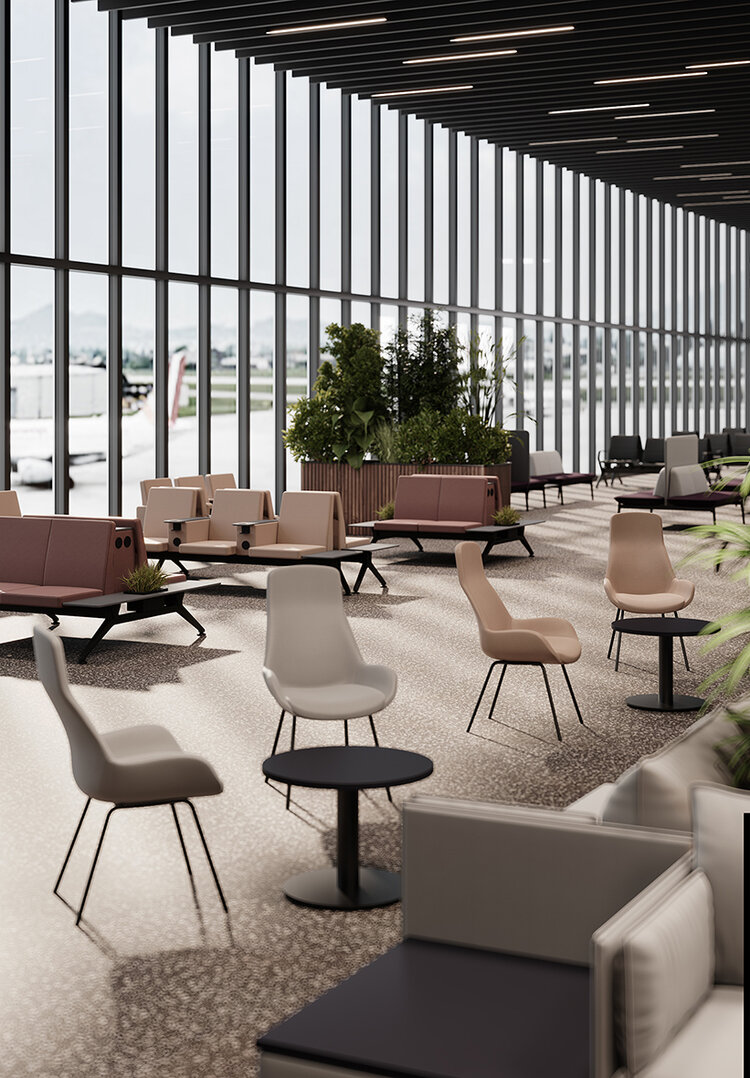
Lupino and V-Travel extension by Kusch+Co
Airports, as gateways to the global world connecting distant countries, different cultures, distinct customs and diverse cuisine, are in the perfect position to provide this unique experience, which is not available elsewhere. Maxing this experience out is one the most recent trends in the industry.
Carefully selected shops offering limited editons of the highest quality products from all over the world, restaurants serving exotic cuisine in a confidence-inspiring environment, a range of available spaces addressing passengers needs - reading in the relax zone, working in the waiting area, taking a break from shopping on a soft seating system or dining and socialising in food courts. Add to this the “wow” effect, such as fountains resembling waterfalls, or waiting zones imitating jungles, which are specific to each airport.
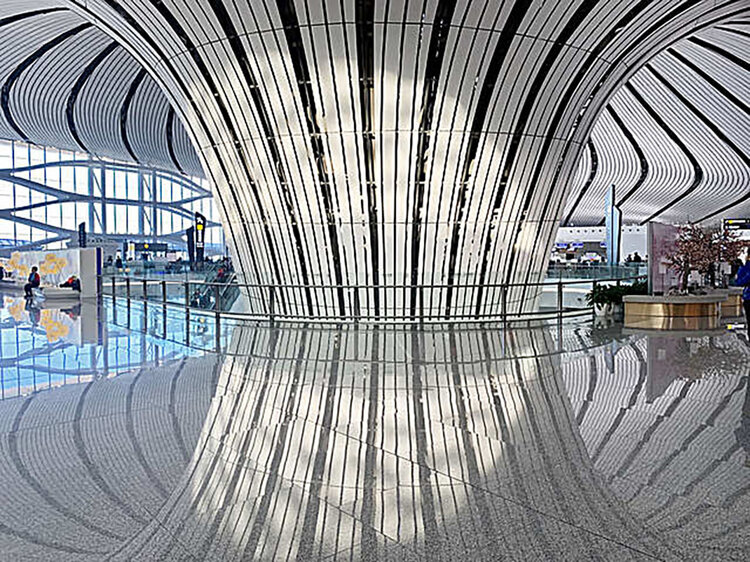
The challenge: adding that “soft” experience to passenger terminals.
To create this experience of the intriguing unknown in a comfortable, premium-quality environment, airports are on the lookout of one-of-a-kind the interior concepts. Modular soft seating is being used increasingly frequently to meet the needs of such concepts, and when combined with greenery, not only provides enhanced seating comfort, but also creates a multifunctional haven – thanks to power modules, passengers can work or enjoy some entertainment.
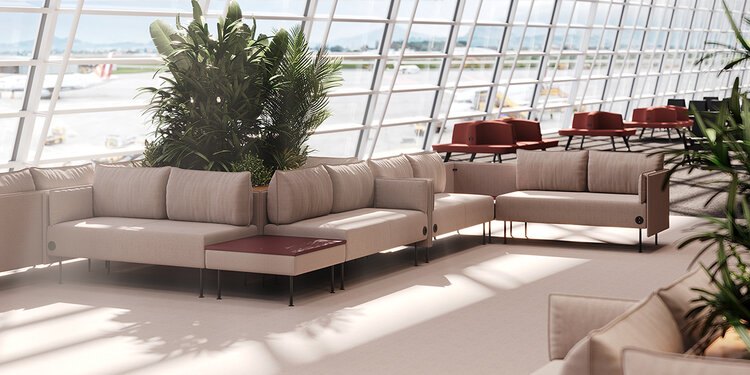
Creva soft seating and V-Travel soft seating by Kusch+Co
The modularity of this solution enables spaces to be configured and reconfigured easily, in order to address new user needs, which may arise in the future.
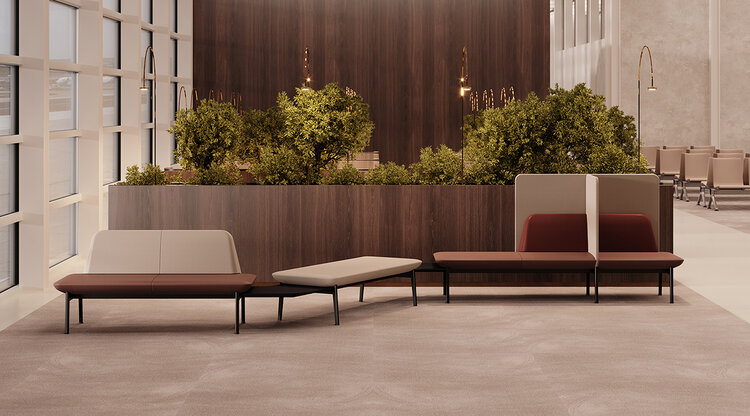
Genaya modular soft seating by Kusch+Co
A good example of a modular soft seating system is Genaya by Kusch+Co, which enables infinitely versatile configurations to be created, regardless of the size and shape of the space. The configurations include subdivision into different zones, for example, for one-to-one conversations, for focused work, or for relaxation.
Designed to shape the space without dominating it, Genaya adapts perfectly to different uses.
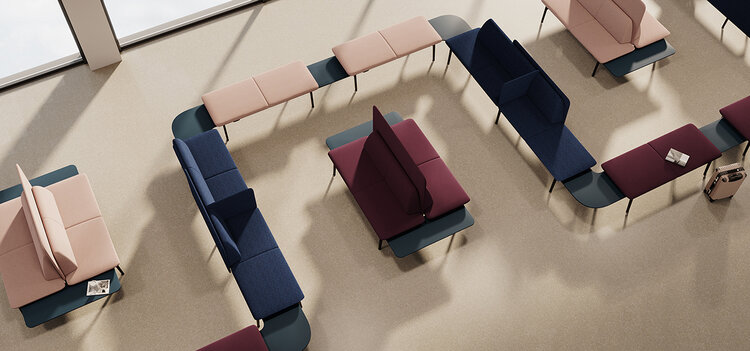
Genaya modular soft seating by Kusch+Co
Passengers’ “soft” experience expectations extend far beyond VIP lounges, which brings an additional challenge: how to furnish waiting areas near gates, shopping arcades, or food courts with soft-seating systems? Systems need to provide enough seating, offer comfort and remain robust at the same time. Added to this are safety requirements, as well as allowing passengers to charge their mobile devices while in the terminal. The question is: which “soft” experience meets all the above requirements?
One of the solutions might be the coming-soon V-Travel extension by Kusch+Co.
V-Travel extension is a refinement of V-Travel, a Kusch+Co bench and lounge seating series characterised by distinctive aesthetics, smart engineering and perfect functionality.
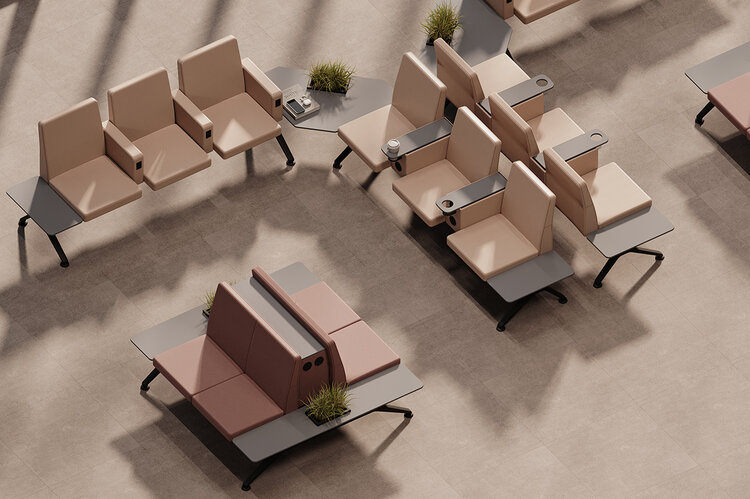
Coming-soon V-Travel extension by Kusch+Co
V-Travel and V-Travel extension seats can be easily interchanged, as they share the same design of cross-beam. This feature enables airports, which are already furnished with V-Travel, to change their lounge configurations and to add a touch of “soft” to waiting areas, enhancing travellers’ experience without changing all items of furniture. The common beam for both V-Travel and V-Travel extension saves money, effort and resources – as reuse of existing elements aids sustainability.
To address the latest trends, the new V-Travel extension will be equipped with USB ports, enabling mobile devices to be charged.
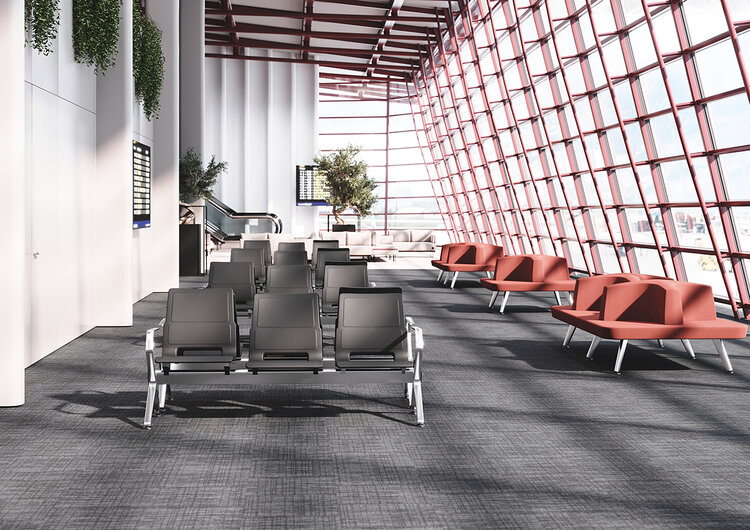
V-Travel and V-Travel soft seating by Kusch+Co
The choice of Kusch+Co products designed for travel environments is a source of inspiration for designing modern passenger terminals. In the hands of interior designers familiar with this industry, this diverse portfolio is a highly effective tool for creating unique passenger terminals – each of them supremely comfortable, safe, robust, ready for 24/7 use, but at the same time, one of a kind.
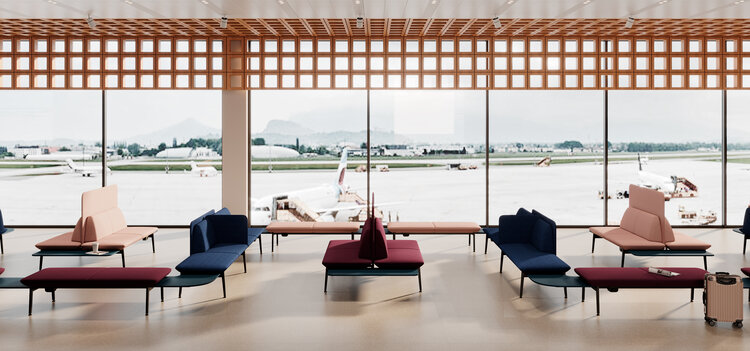
Genaya modular soft seating by Kusch+Co
Connect&Create spaces - the essential part of any modern office.
The pandemic with all its lockdowns was a definite game changer – it brought work into the home environment and therefore mean co-workers had to connect in a different way. Day-to-day work flows have changed completely – while connecting via the Internet and the phone enabled people to manage projects, managing creative processes within teams and maintaining relationships was much more of a challenge. Seemingly connected, we were in fact disconnected and the creative part of the job was impaired.
Let’s re-connect
Spaces for communication, as they were in the past, are nowadays not up to the job of creating that sense of connection. Offices need real Connect&Create spaces, with layouts that influence people’s well-being, facilitate interactions, and encourage them to speak their minds with no barriers or distances. These areas, with facilities that include soft seating configurations and touchdown desks like Creva tables, provide space for discussions, brainstorming and project meetings for groups of different sizes.
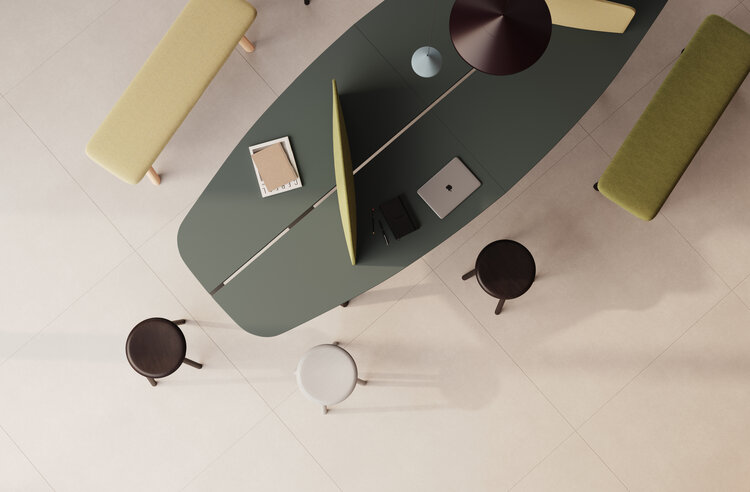
Creva table, Creva stool, Creva bench.
Let’s create
When creating, our minds follow their own paths. Creative processes can be intimate, driven by our private thoughts, emotions, and feelings. Our ideas originate in our experiences and perceptions, and can only happen in a reliable, relaxed environment.
The same applies to facilitating real connections between people – they need an environment that encourages openness and collaborative creativity. Well-laid-out spaces themselves play a crucial role in this process, for example soft-seating configurations with matching tables provide places where participants can meet in private.
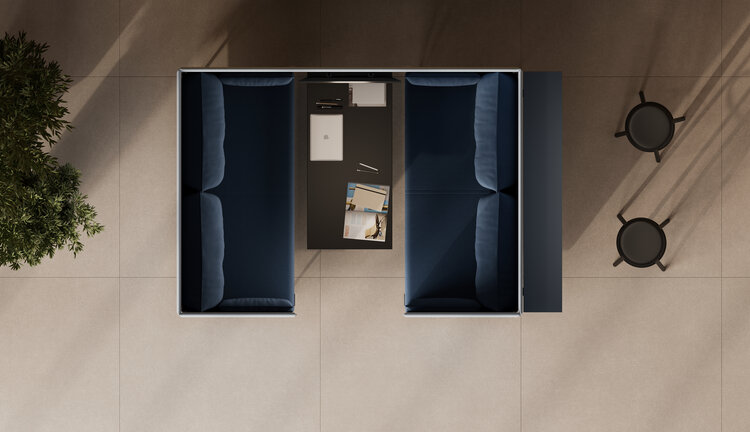
Creva soft-seating, Creva stool.
Connect&Create spaces are like tools that can help to shape the atmosphere and facilitate emotional links.
Once connected, people feel comfortable, focused but not tense – and only then can they become truly creative. When they engage with one another in creative, touchdown meetings, their minds tend to connect as part of the creative work-flow, when one word inspires another and one vision gives birth to another. One person begins with an idea, which is then transformed into a shared vision, and everyone involved has equal ownership. This is the way we can truly connect while creating new ideas, enhancing existing ones and solving problems.
Connect&Create spaces are not designed for creative businesses only – nowadays every industry needs that non-standard, out-of-the-box approach. Complex problem solving is rarely a solitary activity – on the contrary, it requires different points of view, experiences, and expertise being brought together at one touchdown table. That process generates surprisingly relevant, yet unfamiliar solutions.
Connect&Create enhances collaboration processes, which are the essential part of the modern working experience. Explore Kusch+Co solutions for Connect&Create spaces.
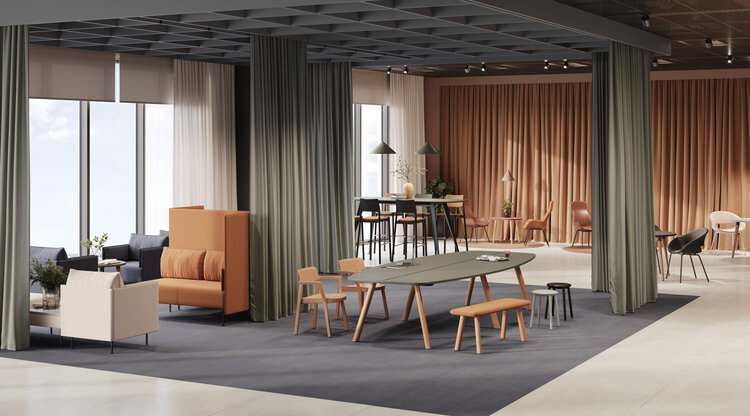
In the foreground: Creva soft seating, Embla, Creva table, Creva stool, Creva bench.
In the background: Arn, Comta, Lupino, San Siro, Volpino.
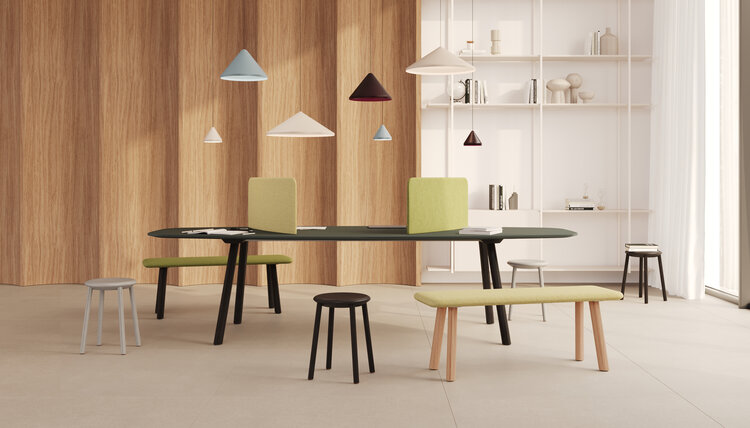
Creva table, Creva stool, Creva bench.
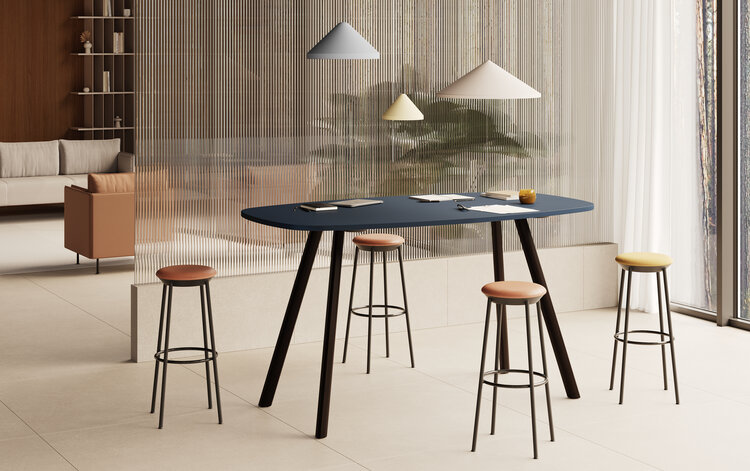
Creva soft seating, Creva table, Creva stool.
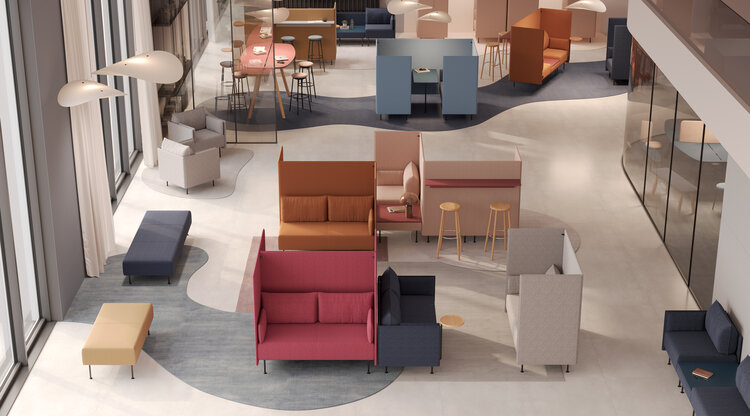
Creva family.
An interview with Justus Kolberg, V-Care designer.
Justus Kolberg is a creative mind behind our latest launch, the V-Care chair, the Red Dot winner. In the interview, he talks about his visions and inspirations behind the V-Care chair.
“Every good design needs an inspiration, and in this case the inspiration came from my vision for this chair: to create a really nice, friendly, welcoming, inviting product that says: come on, seat on me, you will feel good – says Justus. – Another thing on my mind was the smile of the people, that I could try to translate to the chair, so it’s the smile on the shell.
My motto in design is “simplicity by intelligence”. This chair looks really simple, because there is a lot of intelligence inside, that you don’t see. That’s why I am happy about the result of the design.
I think the V-Care sled base model was awarded with the Red Dot Design Award 2022 because of the combination of functionality and the design, and because of features regarding cleaning and disinfection. You seat fantastic inside the shell, the design is natural, light and fresh. So it’s the whole package.
One of the milestones of this project was the moment, when I had the first shell in my hands – because it’s always a different thing when you see it on the paper, or on the video. If you have it in your hands, you can feel the energy, that is coming out from the project, you can sit in it and you feel like “we’ve got it”!
That was one of my visions regarding this chair, that a chair is not only a piece to sit on. It’s creating the atmosphere, it’s creating interiors, it’s telling you something and in this case especially for healthcare it’s important that the chair creates the positive atmosphere, that helps you to feel good.”
"Quality is irreplaceable"
At Kusch+Co, quality has always been irreplaceable. It guided us, when we were designing the first chair and it guides us now when exploring new creative avenues. This guiding principle has been, and still is, our answer to any question.
To us, quality is the concept that translates not only into our products, their design, materials and precision we proceed with, but also into our approach. It’s our motivation that propels us to constantly explore customer’s needs and address them through our solutions. As a man is in the centre of our interest, we don’t want to offer him just the products – we want to give him the quality, that can truly improve his work, his everyday and the environment he lives in. Because “Quality is irreplaceable”.
Quality of Design
For us, the quality of design is inextricably linked with the quality of our customer’s experience. Good design means an exquisite experience in terms of comfort, ergonomics, health, safety, and aesthetics, to name just a few. Our approach to design is human-centric and it’s the need of the client that challenges the designer in the first place. It’s the function that determines the form.
That’s why we are always working with the designers who are willing to take the challenge. They not only apply their experience into the whole design process, but also question proven ways, explore new paths, experiment, and are not afraid to reach out for new solutions, even those that are ahead of their times.
Like us, the designers we work with perceive the design as a competence. They believe that design should serve people and improve their everyday. Also when designing furniture solutions for public spaces, airports, hospitals etc. we not only want to meet strict requirements of furniture pieces dedicated for such spaces, but first and foremost elevate people’s experience.
Quality of craftsmanship
A man is not only front and centre in our design process, but also a key reference point of our manufacturing processes. To elevate his experience, we use all our know-how, look for new ways, experiment, and let our master craftsmen spread their wings.
It’s always the human touch that makes the furniture into a masterpiece - for this reason, in our production plants we do not only use cutting-edge technology but also traditional craftsmanship, which plays an important part in delivering the value. The precision we proceed with, the accuracy, and the highest attention to detail – the partly hand-crafted production, already planned at the stage of the design process, has always been a Kusch+Co hallmark that guarantees outstanding effects.
When we say “effects”, we do not mean “products”. We mean the user experience as a whole: the look and the feel, the aesthetics and the comfort, the ergonomics and safety, the versatility and the pleasure of communing with sustainable materials. For us, this is the only significant proof of the quality of design, the quality of materials, and the quality of craftsmanship.